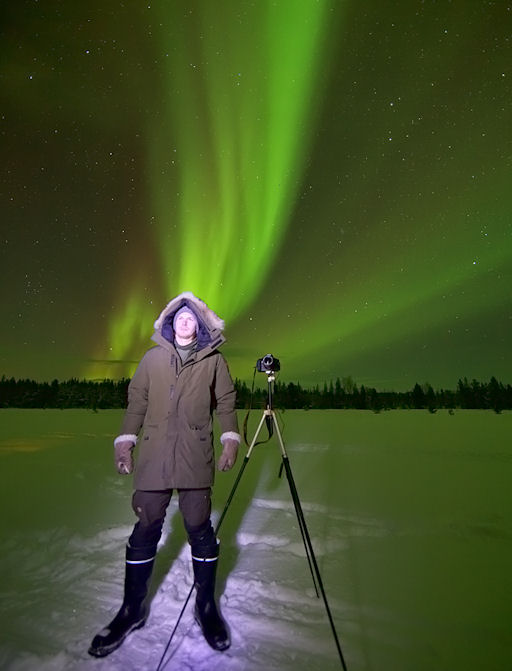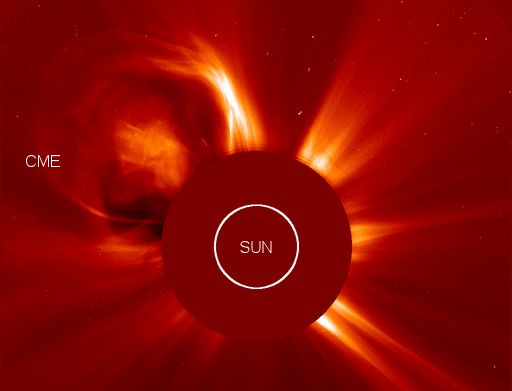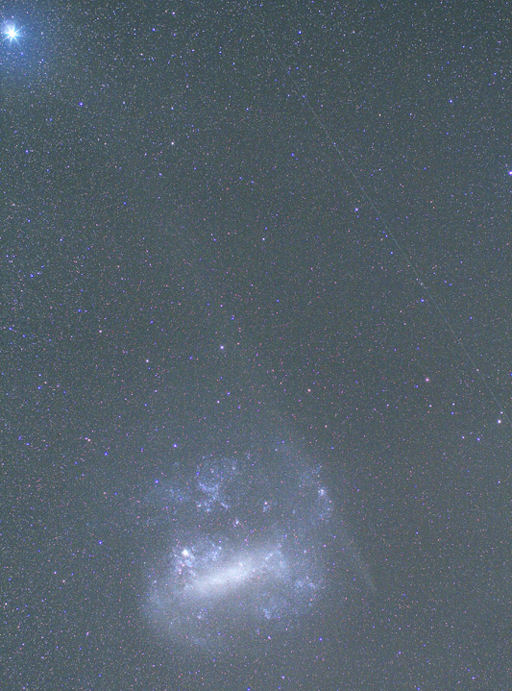Turn your cell phone into a field-tested satellite tracker. Works for Android and iPhone. | | |
CHANCE OF AURORAS: A coronal mass ejection (CME) heading mainly for Venus might deliver a glancing blow to our planet, too, on Jan. 19th. High-latitude sky watchers should be alert for auroras when the cloud arrives.
In Finland, the Northern Lights are already shining. Aurora tour guide Andy Keen took this picture last night in the Municipality of Inari:

"We didn't need head-torches as the forest was illuminated by the Aurora dancing above our heads," describes Keen. "For over two and a half hours we witnessed one of the best light shows that I've ever observed in over 5000 hours of 'chasing' the auroras. Ribbons, curtains, mini spirals, bursts - you name it and we had it."
"Some of our group were so amazed by what we were witnessing that they simply lay on their backs in the snow and soaked it all up. Others ran around making noises like over excitable school children - myself included. It was absolutely mind-blowing to say the least. If this is a sign of things to come as Solar Maximum approaches, then all I can say is that we're all in for a real treat over the coming months and years." Aurora alerts: text, voice.
VENUS-DIRECTED CME: Sunspot complex 1401-1402 erupted yesterday, Jan. 16th at approximately 0400 UT, producing a C6-class solar flare (SDO movie) and a bright coronal mass ejection. SOHO recorded the expanding cloud:

According to a forecast track prepared by analysts at the Goddard Space Weather Lab, this CME will hit Venus during the late hours of Jan. 18th. Because Venus has no global magnetic field to protect it, the impact will erode a small amount of atmosphere from the planet's cloudtops. There's no cause for concern, however, because Venus's massive atmosphere will scarcely notice the loss.
The same analysis shows that the CME might deliver a glancing blow to Earth's magnetic field around 1200 UT on Jan. 19th. The impact could cause geomagnetic activity and auroras around the Arctic Circle.
THE GHOST OF COMET LOVEJOY: On Dec. 16th, Comet Lovejoy plunged into the atmosphere of the sun and emerged improbably intact, bright enough to see with the naked eye in the dawn sky. Thirty days later, Comet Lovejoy is a ghost of its former self. On Jan. 16th, Minoru Yoneto of Queenstown, New Zealand, photographed the fading sungrazer:

The comet's gossamer tail stretches more than 13 degrees from the Large Magellanic Cloud (bottom) to supergiant star Canopus (upper left). "I didn't expect the tail to be so long," says Yoneto. "[To show the full extent of it], I made a two minute exposure using my Canon EOS Kiss X2 digital camera set to ISO1600." He also captured a satellite traveling along the star field parallel to the comet's tail.
The Ghost of Comet Lovejoy is still putting on a good show.
more ghost shots: from Luis Argerich of Heavy, Argentina
Comet Lovejoy Gallery
[previous comets: McNaught, Holmes, Lulin, Tuttle, Ikeya-Zhang]
January 2012 Aurora Gallery
[previous Januaries: 2010, 2009, 2008, 2007, 2005, 2004]

